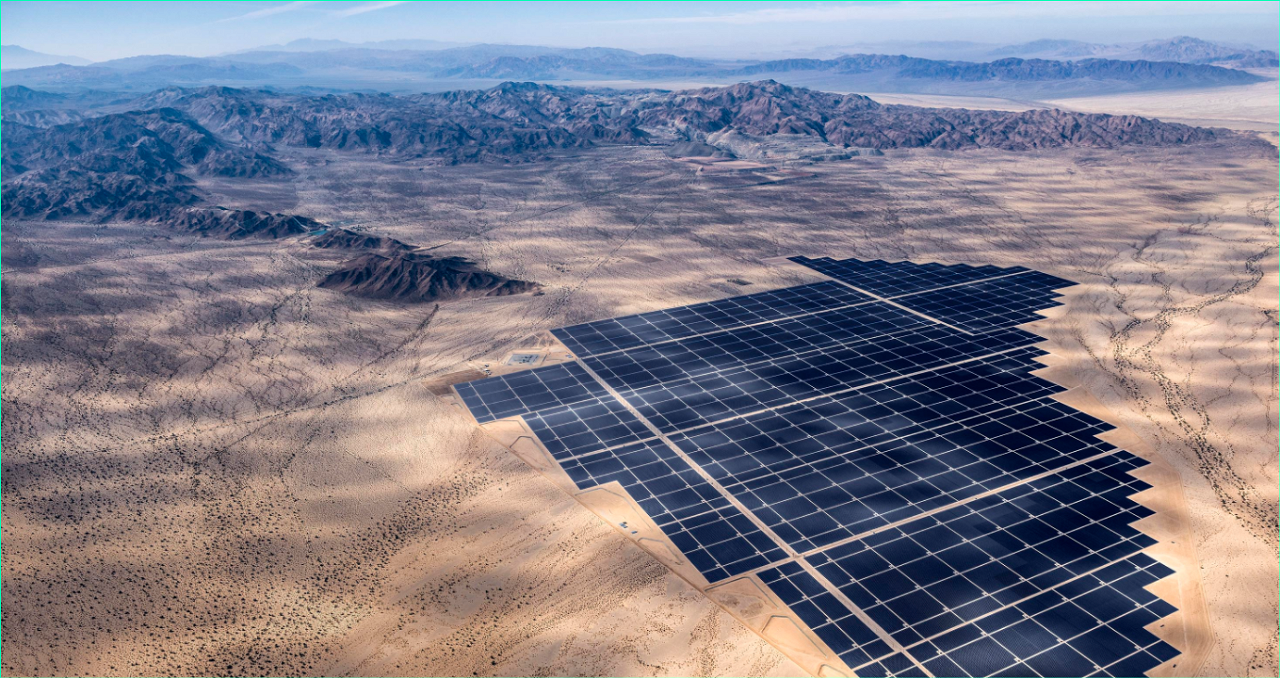
According to a new modelling research, putting large-scale solar farms on the Arabian Red Sea coastal plain could significantly enhance rainfall in this parched region of the world. Simulations reveal that such installations could alter the reflectiveness of the surface enough to disrupt coastal air circulation, according to the researchers.
Changes in local weather patterns and rainfall could result in enough water to cover the requirements of five million people annually. Although idealized, the team claims that their research shows that freshwater recovery from sea breezes can be achieved by land surface geoengineering.
Water security is becoming a key worry as the planet heats. This is a particularly serious problem in hot, arid regions like the Middle East. Many countries in this region, including Saudi Arabia, are experiencing water shortages.
They are depleting subsurface aquifers due to a lack of rainfall. Although water desalination is commonly utilized to improve freshwater supplies, present technologies are unsustainable due to their significant energy use. Desalination is likewise unlikely to meet future water needs.
The idea of artificially boosting rainfall over the Arabian Peninsula via techniques like cloud seeding is gaining popularity. Because the Red Sea evaporates 0.7 teratonne of water per year, there is a lot of water in the air in the region.
This equates to almost 8% of the total mass of water vapour in the Earth's atmosphere. Sea winds sweep this water across the land along the Arabian Red Sea coast, but only a small portion of it falls as rain. Instead, it is transported south, to the equator and the Indian Ocean's midsection.
Changing Albedo
Georgiy Stenchikov, a climate and atmospheric modelling expert at Saudi Arabia's King Abdullah University of Science and Technology, and his colleagues questioned how changing surface albedo – the reflectiveness of the land – would affect water transport and rainfall patterns in the region. The goal, according to Stenchikov, is to maximize the use of this large natural freshwater resource through increasing precipitation.
Stenchikov and colleagues completed a series of numerical simulations in a regional weather research and forecasting model in their most recent paper, which was published in the Journal of Hydrometeorology. They looked at three scenarios: significant forest planting, higher albedo, and lower albedo.
Afforestation and improved surface albedo throughout the Arabian Red Sea coastal plain, according to the simulations, would reduce rainfall. The horizontal thermal differential between land and sea is what drives the region's sea breezes. The pressure gradient created by the warmer land and cooler sea forces moist sea air to the land. Afforestation and a more reflective surface chill the land, dampening sea breezes and reducing water vapour transfer from sea to land, according to the models.
Strengthening Sea Breezes
Reduced surface albedo, on the other hand, would result in more rainfall. The researchers discovered that it would warm the coastal region, intensifying sea breezes and increasing water vapour transport to the coastline. According to the models, increasing convection currents over land improves vertical mixing in the lower atmosphere, particularly of water vapour. Humidity, cloud formation, instability, and turbulence all rise as a result of this. "All of this is based on enhanced water surface flux," explains Stenchikov.
By absorbing solar energy and heating up, solar panels are known to change the surface energy balance. The researchers discovered that a change in albedo associated with large-scale solar panel plant construction would boost rainfall in the region by 1.5 gigatonnes during the dry summer season.
This is due to a nearly two-fold increase in wet days from July to September when compared to present conditions. Smaller changes in albedo would have a big influence on the frequency of wet days and the amount of rain that falls.
This proof-of-concept study, according to Stenchikov, suggests that the notion could work, but additional research is needed. "We need to do further work to attempt to optimize this system," he says, "looking at the sizes [of solar installations required] and the best distribution for this specific location."
According to Stenchikov, such plans may theoretically function in any coastal locale with sea breezes. He argues that they will function best in places with strong sea winds, high sea evaporation, and huge water vapour fluxes.
(Source: Physics World)
















